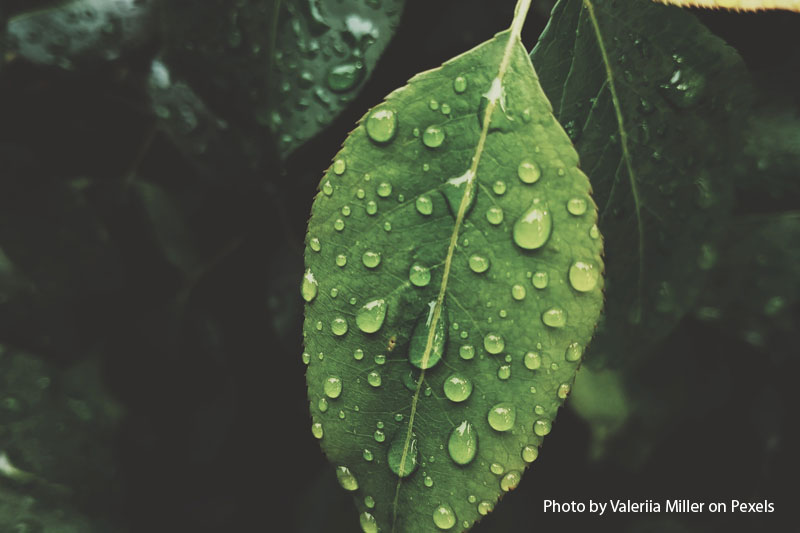Rain is usually abundant during the spring, and in most cases, it’s great because many plants need water after a long winter. Trees generally flourish when it rains, especially if the soil was previously dry. And while the precipitation is usually beneficial, too much rain impacts trees differently and can be a problem.
What are the effects of too much rain on trees?
Too much rain in an area often leads to flooding, which can be very bad for trees. The following effects may impact your trees with constant rain.
- Your trees are at risk of drowning. With constant rain, the soil can become waterlogged, which means the roots of your trees are fully submerged. Unfortunately, roots need oxygen to survive. And while soil seems packed, there is sufficient space for air to get to the roots of trees and ensure adequate oxygen flow. However, roots cannot get oxygen when submerged in water, and your trees may be at risk of drowning. A tree in waterlogged soil is also at greater risk for disease and insect infestations, which are also harmful to the trees.
- Your soil may become damaged. When there is excessive rainfall and flooding, soil can become loose and displaced, which leads to erosion. If the soil supporting your trees erodes enough, it can topple your tree, killing it and becoming a safety risk and a danger to your property.
- Your leaves will wild or die. Over-saturated soil often causes wilted, yellow, or fallen leaves, even in seasons where they are usually green. Moisture also promotes fungal growth, which increases the risk of fungal disease in your trees. Disease also spreads easier from tree to tree when leaves are wet.
How can I help my trees if there is excessive rain?
Dead and diseased trees are a huge problem. They become a health risk to other trees in the area. Additionally, they are at risk of toppling or having branches break, which is also a safety hazard. Yet, removing them can be expensive and time-consuming. And it will leave a void in your landscaping.
Therefore, you may want to do whatever you can to preserve your trees if you are experiencing excessive rainfall or flooded conditions. But the question remains as to how much water is too much. Unfortunately, it isn’t easy to gauge, and there is often no exact measurement. And even if there was, it could vary by the type of tree. If you are concerned, consulting with an ISA Certified Arborist in your area may be advantageous to determine whether you need to take mitigating actions due to heavy rainfall.
The reality is that several days of rainfall usually isn’t enough to jeopardize your trees. But if it continues to the point where flooding becomes a risk, your trees may be in peril. In these conditions, it’s best to:
- Avoid additional watering: Even after the water levels have subsided and rain has stopped, the soil is still likely waterlogged. And it will take some time for the moisture level to return to normal. During this time, you should avoid additional water. If you are in doubt about whether to resume watering, dig down six inches. If the soil is still wet, do not add any additional water.
- Avoid fertilizing: It’s also a good idea to avoid fertilizing the soils until the water level has decreased. Fertilizer induces trees to expend extra energy on growing, but trees may need to conserve this energy while recovering from the excessive waterfall.
- Monitor your trees: It is also wise to continue monitoring your tree throughout the next growing season to look for signs of long-term damage or disease. Consulting with an ISA Certified Arborist is beneficial if you are unsure what to look for.
In addition to these actions, there are other steps you can take before excessive rainfall to minimize the damage to your trees. These include:
- Pruning your trees to remove dead or broken branches
- Re-setting or staking trees to improve stability
- Controlling pest infestations
- Adding mulch a foot away from the trunk to protect new roots and improve aeration
- Supplementing minerals with micronutrients and slow-release nitrogen
- Leaching soil where saltwater has seeped to remove sodium
- Removing sediment deposits to return the soil to its original condition
Too much rain can be a threat to your trees. Contact Tree Barber today to learn more about maintaining a good moisture level and protecting trees after heavy rain.
Recognized as a top tree care company, Tree Barber Enterprises serves thousands of residential and business customers in North County San Diego. Our ISA Certified Arborists and experienced Tree Workers are highly skilled and extensively trained in the latest arboriculture techniques, which enables us to perform our tasks quickly, safely, and economically.

